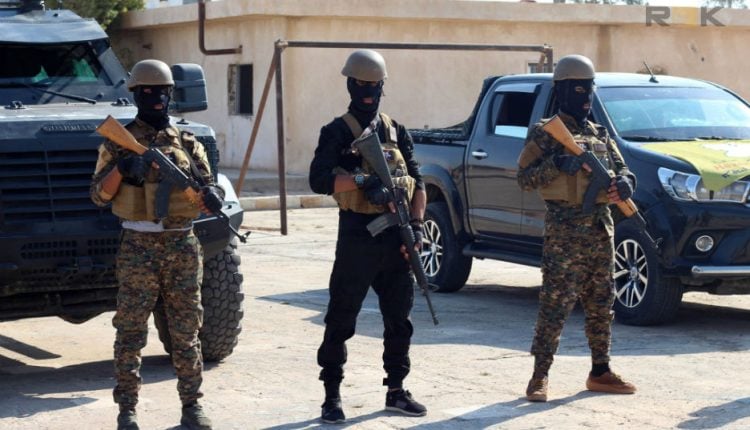Tensions between the Syrian military and the Kurdish SDF have continued to escalate, with heavy fighting reported in the Aleppo Governorate overnight. Both sides are blaming the other for the incident.
The SDF maintains that the military was engaged in provocations and advancing tanks toward their position when the fighting started, while the defense ministry maintains that they were carrying out unrelated redeployment and had no intentions of trying to fight the Kurds.
The fighting was near Deir Hafar, east of Aleppo city. In addition to disputes over who started it, both sides accused the other of attacking civilians in the area. The SDF reported seven injuries on their side, while the Syrian military has yet to report any.

SDF troops patrol Deir Hafar | Image from SOHR
Yesterday, the SDF also accused government-linked forces of using suicide drones in growing numbers around Aleppo. Though they didn’t specify which forces they were, this terminology almost always means the self-proclaimed Syrian National Army (SNA), a Turkish-backed group that has been attacking the Kurds off and on for years.
The SDF is meant to be integrated into the military, under an agreement reached in March, though the exact details of how that will happen has yet to be fully negotiated, and growing disagreements with the ruling Hayat Tahrir al-Sham (HTS) has stalled the progress.
The US has been outspoken in their desire to see the SDF integrated fully, and envoy Tom Barrack has repeatedly chided them for not doing so. This is reflective of the increasingly cozy relationship between the administration and the HTS, in spite of their historic al-Qaeda ties.
Barrack and CENTCOM commander Admiral Brad Cooper met with SDF leader Mazloum Abdi today, and held what Barrack referred to as “substantive discussions.” Though details are scant, the SDF report said they had reaffirmed their “partnership” with the US.
The SDF was a key ally in US military action against ISIS forces in Syria, though since the Trump Administration has backed the idea of a “one state, one army” Syria sought by the HTS, how close that relationship remains is sometimes uncertain.


